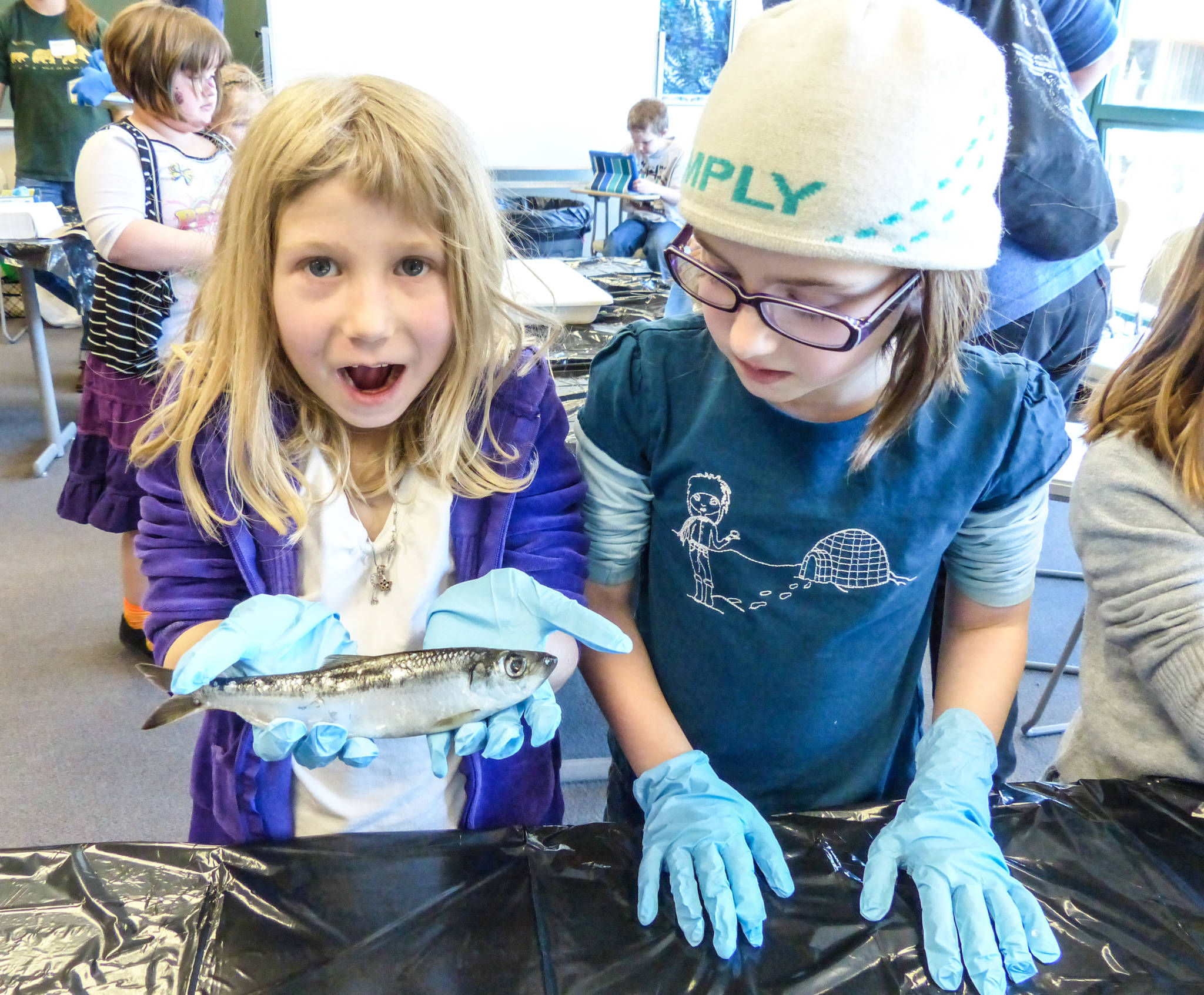Ten years ago, two sixth-grade girls wandered into their first day of Girl Scouts robotics practice. Both were excited to see their friends and other troop members outside of school. Neither one had ever thought about being on a robotics team before. Rebecca Hassler proudly wore a T-shirt that said “Dear Math, I am not a Therapist, Solve Your Own Problems.” Jordan Cooper hadn’t taken a public stance against math, but she didn’t necessarily see herself as a future engineer.
After that first day, it didn’t take long for both girls to get hooked, and the pair went on to help start the all-girls high school robotics team at Thunder Mountain High School. This year, both girls are in their junior year of college. They are pursuing very different fields of study, but both have been profoundly influenced by the extra-curricular activity that neither knew much about beforehand.
Through robotics, Jordan discovered that she really enjoys solving problems and making things work. Through three years of FIRST LEGO League and then four years as team captain of the all-girls FIRST Tech Challenge Team at TMHS, she realized that she could use her creativity and three-dimensional thinking to solve problems and help people as a career. Jordan is currently a civil engineering student at University of Alaska Anchorage, and runs the robotics camps in Juneau during the summers. She earned her Girl Scout Gold Award, the highest level of achievement in Girl Scouts, by creating a website with STEM activities to inspire other kids to explore science and engineering.
Rebecca is now doing an internship at Disney World and will return to Philadelphia to finish her acting degree at the University of the Arts. While she is not planning on starting a career in a traditional STEM field, she is a strong advocate for STEM programs and has a very different outlook and attitude towards STEM subjects than she did in sixth grade. Rebecca admits now that she didn’t realize just how much math she was learning through the programming and project design in the program. The teamwork and performance aspects of the program hooked her, and she couldn’t help but learn a lot of math along the way. Now she is happy to solve her own math problems.
Jordan and Rebecca are two examples of what the Girls Scouts hope we are doing with our STEM programming. At Girl Scouts of Alaska, we introduce girls of every age to science, technology, engineering and math to help them see how they can make sense of and improve the world — whether they’re discovering how a car engine runs, building a computer or learning about Alaska’s plants and animals.
Girls are natural-born scientists. They look inquisitively at the world around them, experiment, push boundaries and learn as they go. Despite these natural inclinations, STEM careers have historically and statistically been male-dominated. Aiming to reduce this disparity, the Girl Scouts have developed and implemented STEM programming.
Girls introduced to STEM programs reported an increased interest in careers in STEM fields which is vital as 80 percent of future careers will demand knowledge of science and technology. Plus, STEM programming provides numerous benefits for girls that expand far beyond a career choice. Through research, we know that girls who are introduced to STEM programming report increased overall self-confidence, step into leadership roles more often and work better with their peers.
The Girl Scouts of Alaska STEM program includes multiple efforts. Each month, Girl Scouts of Alaska releases a set of activities focused on an aspect of STEM and the outdoors to be used by leaders and girls during their meetings, or on their own, to earn badges. We also run special events across the state like Women of Science and Technology Day which will occur in Juneau this spring and the ExxonMobil sponsored Introduce a Girl to Engineering Day that just came to Juneau in September. Both of these events connect girls to a variety of STEM professionals and expose them to different content areas through hands-on activities.
STEM Activity
To earn their Physics in Motion patch, girls learned about Newton’s First Law, friction, gravity, inertia and pressure — just to name a few. Mimicking the tablecloth trick, this simple activity demonstrated how Newton’s First Law is applied — how objects in motion stay in motion and how objects with greater mass have greater inertia. Since the cubes want to resist a change in motion due to their inertia, they stayed in place if the notecard was removed fast enough. Using lighter objects, such as paper cups, proved to be more of a challenge because less mass means less inertia. Try it out!
Materials:
– Blocks, plastic cups, or coffee cans. Any stackable material should work.
– Notecards
– Hole punch
– String
The activity:
Punch a hole on one edge of each notecard and tie a string through the hole, leaving a long tail. Stack the blocks or cups in a tower with a notecard placed in between each block. Make sure to face the pull-strings in differing directions.
Starting at the top, remove the first notecard by quickly pulling the string straight back. Continue down the stack, pulling the notecards from each block. Observe how inertia is keeping the blocks in place.
Next, have the entire group pull their cards out at the same time.
Try another tower using objects with less mass such as paper cups and observe whether it is easier or harder to keep the object from flying away when pulled.
• Alyson Cooper is the membership specialist for Southeast Girl Scouts, and Rebecca Pilipchuk is the communications and IT manager for Girl Scouts of Alaska. STEM Corner is a monthly column about Science Technology Engineering and Math in Juneau, written by a rotating group of Juneau STEM Coalition members.

